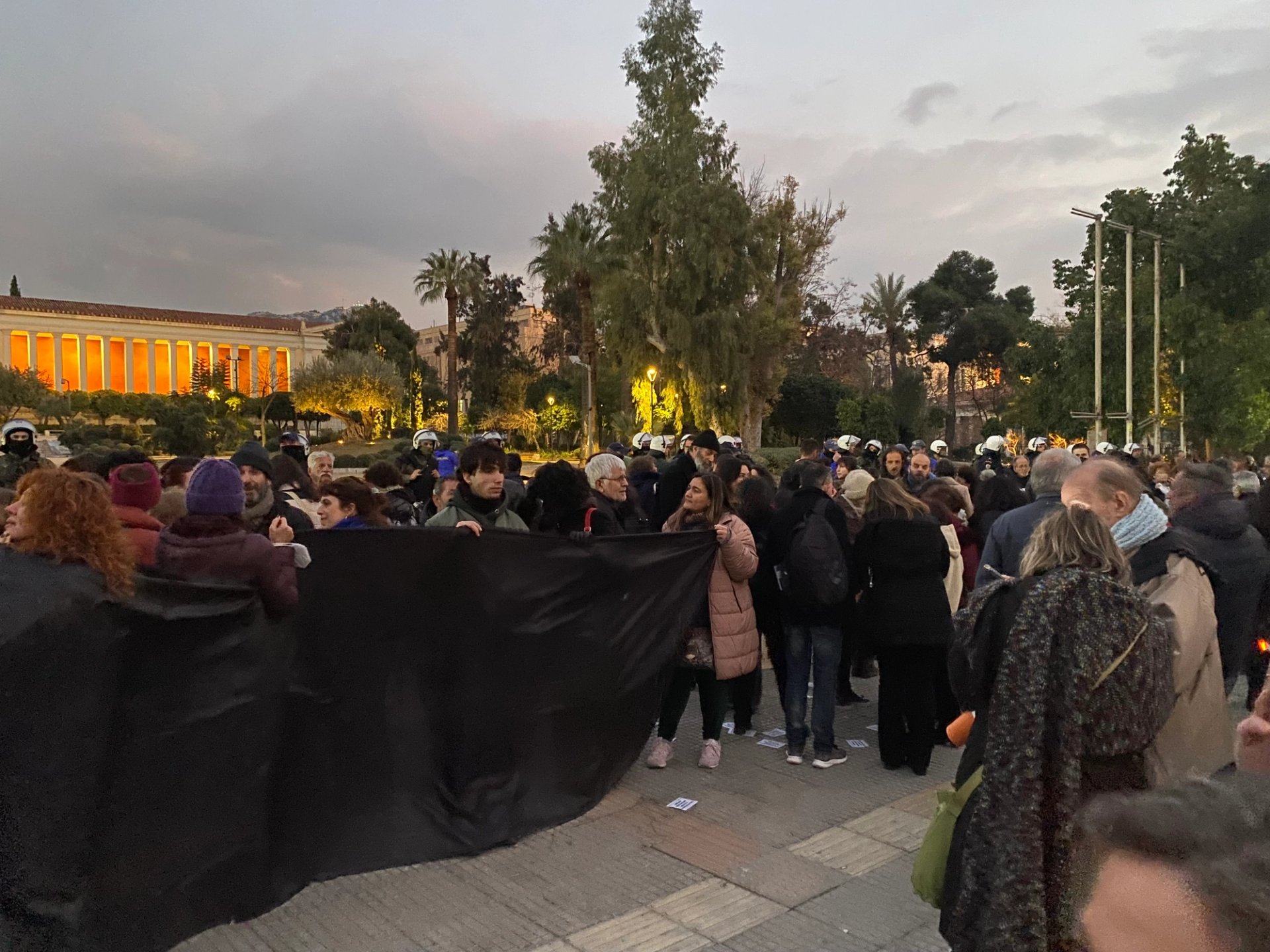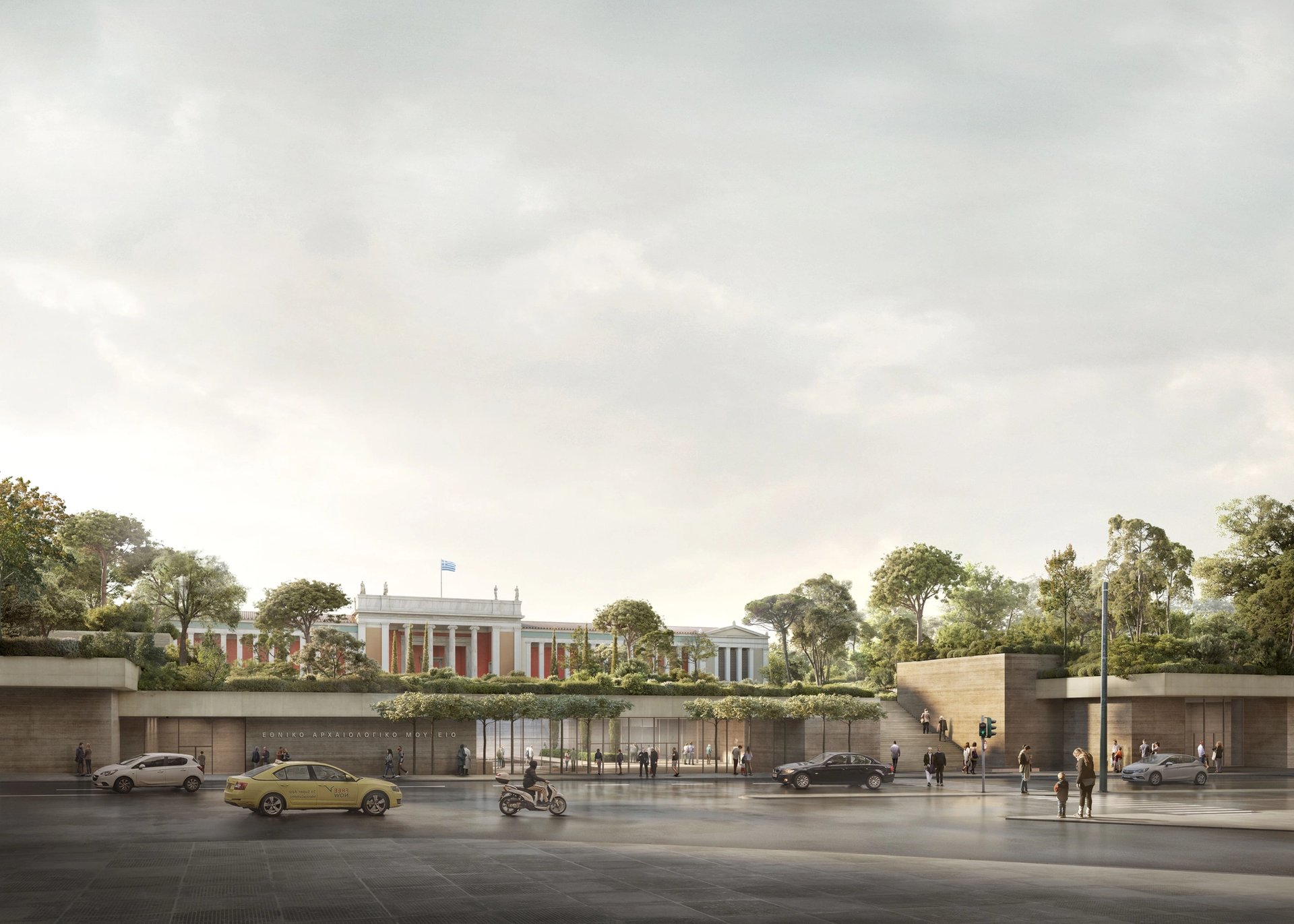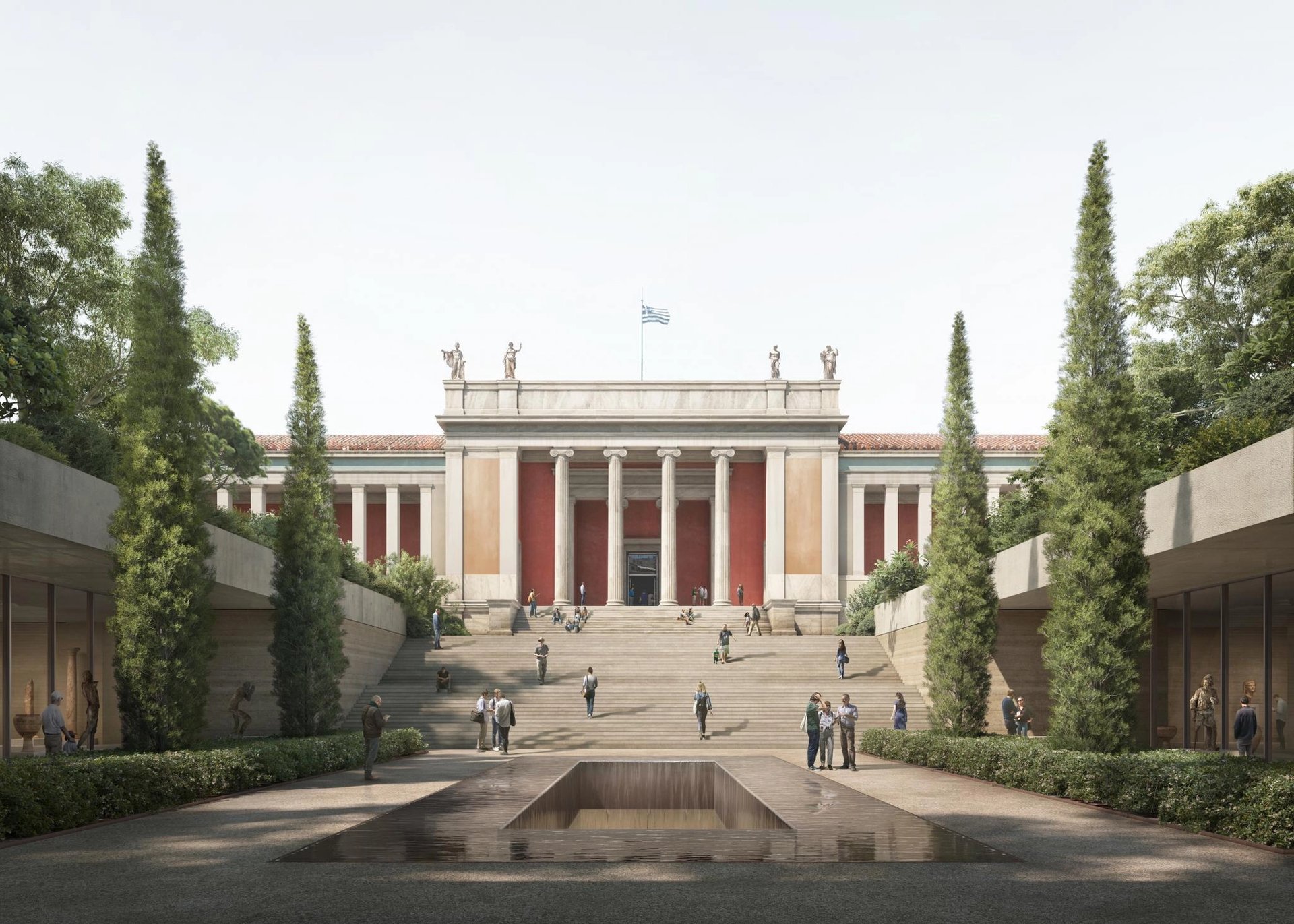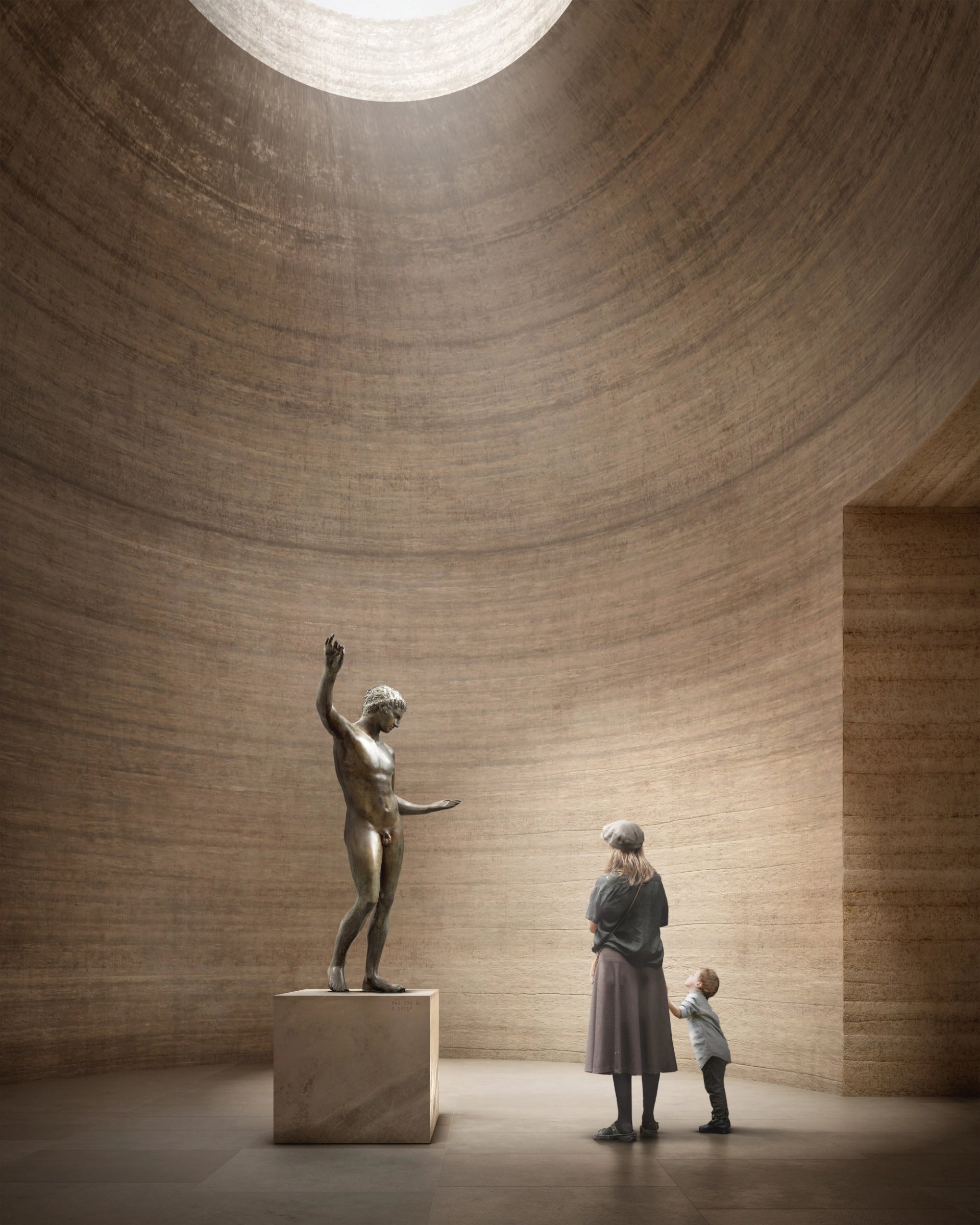The whole of Athens, one might suggest, is an archaeological museum. Nevertheless, news that the city’s 19th-century Archaeological Museum is going to be extended and restored by David Chipperfield Architects (DCA) is being received in Greece as a major cultural event.
It also attracted protests—a crowd gathered outside the media launch at the museum yesterday, attended by the Greek prime minister, Kyriakos Mitsotakis, hemmed in by heavily armoured riot police. The protests revolve around government plans to change the status of museums, removing them from civil service oversight, which they fear opens them up to privatisation.
The architectural plans envisage a substantial 20,000 sq. m expansion of exhibition space (more than tripling its current provision), a new auditorium, restaurant, public entrance and ticketing facilities, and a lush garden above the extension.

The crowd gathered outside the media launch at the museum yesterday, attended by the Greek prime minister, Kyriakos Mitsotakis Photo: Edwin Heathcote
The original Neoclassical museum building dates from 1866-74 and was designed by the German architects Ludwig Lange and Ernst Ziller. (The latter built or supervised much of Greece’s cultural and governmental infrastructure.) It houses one of the finest collections of Ancient Greek artefacts in the world, including prized works like the golden Mask of Agamemnon and the bronze statue of Antikythera Ephebe. At present, only around 10% of the collection is on display.
Situated in the central but run-down and graffiti-strewn Exarchia neighbourhood (an area renowned for protest, resistance, radicalism and squats) and beside the imposing classical Polytechnic building, the extension will see a shabby, sunburnt public space transformed into a new garden by lifting it up above street level and creating the new museum spaces beneath.

A rendering of the new complex, designed by David Chipperfield Architects © Filippo Bolognese Images
The 19th-century museum "carries with it a certain idea of detachment—something up a staircase in a slightly deserted public space—enclosing treasures," DCA says in a statement. "But in the intervening years the museum has changed its priorities to become entangled with the whole tourism industry and the competition of visitor numbers. This is particularly true of big national collections and the question is how you can still remain relevant to local populations. We hope the garden can give some compensatory appeal."
The garden above, designed by the Belgian landscape architects Wirtz International, will also be a more informal affair, with paths meandering between the trees, lawns and gravel areas, and clusters of very classical-looking Aleppo pines. The garden will be open to the public as well as museum visitors.

Rendering of the central courtyard connecting the old and the new © Filippo Bolognese Images
Bringing the new museum entrance out all the way to the street front and to the same level as the pavement allows the architects to elide the problem of the formality of classical entrances with their steps and their aesthetic and physical inaccessibility, "reinforcing its relationship with the city" and "offering passersby views into the new exhibition spaces", according to the press release.
In deference to the existing formal, classical plan, the new building will be similarly symmetrical although broken up by a seemingly random arrangement of solid structural elements. A central courtyard will allow the original museum and steps to be seen in their intended form once visitors are inside the building.
"That we are displaying sculpture rather than paintings gives us a little more freedom in the architecture, as well as with the possibilities for passive ventilation," DCA says. It also refers to the very idea of archaeology, that of artefacts excavated from the depths of the earth. One room shown in the architects’ drawings is an almost temple-like, double-height, domed space with an oculus above, a space to encounter a single sculpture with reverence.

Enclosed exhibition space © Filippo Bolognese Image
Compared with other grand museum projects, notably perhaps Bernard Tschumi’s Acropolis Museum, which opened in 2010 in the shadow of the Parthenon, this design appears discreet in the extreme. "This project is not about the genius of the architect," DCA says. "We enjoy working with history because it is such a rich place to dig. At the Neues Museum [in Berlin], where perhaps other architects might not have enjoyed not being able to impose things, we were able to apply our approach of digging and finding things. And in that way we are protected by the creativity that came before us."
Referring back to the German capital (this project comes from DCA's Berlin office) is perhaps inevitable. The practice has had long experience of slowly reimagining Berlin’s Museum Island, a rich collection of Greek-inflected classical buildings and making them again into a coherent urban and cultural landscape. It was a German architect who designed Greece’s Archaeological Museum and German archaeologists were key to excavating its past in a modern and methodical manner. "Berlin was imagined as the ‘Athens of the North and Athens has become the Berlin of the South," DCA says. "There is a strange resonance."


